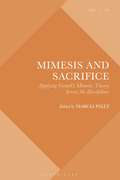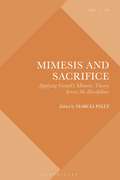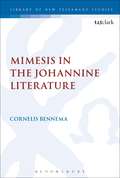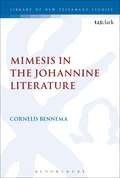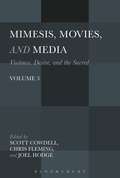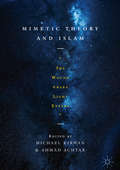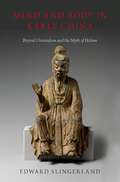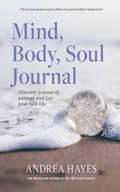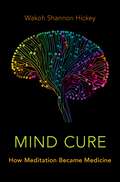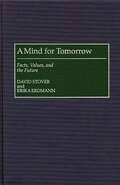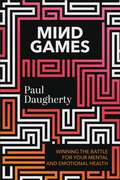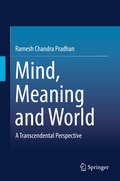- Table View
- List View
Milton's Vision: The Birth of Christian Liberty
by Theo HobsonNo other writer is so grudgingly admired as Milton. He wrote great poetry, goes the received wisdom, but his creed was narrow, chilling, and inhuman. His reputation is that of a stereotypical Puritan and authoritarian. Yet Theo Hobson maintains that no one opposed religious authoritarianism with such vehemence. Indeed, he argues that no one was so adamant that political freedom is built into the Christian gospel. Milton insisted that Protestantism was compatible with political liberty-that the two ideas are complementary. By treating all ecclesiastical authority with suspicion, he helped to establish the modern ideal of secularism. He was a Christian libertarian who wanted every form of church to wither away, so that the Gospel might be completely free of coercion. Milton's Vision is thus a vital contribution to the contemporary debate about the place of religion in public life. There has never been a study of Milton that highlights his relevance to the core issues of our day: how religion gives rise to and interacts with secular ideals.
Mimesis and Atonement: René Girard and the Doctrine of Salvation (Violence, Desire, and the Sacred)
by Sheelah Treflé Hidden Michael KirwanHow are we to best understand the statement of faith that Jesus Christ lived, died and rose again 'for us and for salvation?' This question has animated Christian thought for two millennia: it has also bitterly divided believers, not least in Reformation and post-Reformation disputes about atonement, justification, sanctification and sacrifice. René Girard's Violence and the Sacred (1972) made startling connections between religion, violence and culture. His work has enlivened the theological and philosophical debate once again, especially the question of whether and how we are to understand Christ's death as a 'sacrifice'. Mimesis and Atonement brings together philosophers from Catholic, Evangelical, Orthodox, and Jewish backgrounds to examine the continued significance of Girard's work. They do so in the light of new developments, such as the controversial 'new scholarship' on Paul.
Mimesis and Atonement: René Girard and the Doctrine of Salvation (Violence, Desire, and the Sacred)
by Sheelah Treflé Hidden Michael KirwanHow are we to best understand the statement of faith that Jesus Christ lived, died and rose again 'for us and for salvation?' This question has animated Christian thought for two millennia: it has also bitterly divided believers, not least in Reformation and post-Reformation disputes about atonement, justification, sanctification and sacrifice. René Girard's Violence and the Sacred (1972) made startling connections between religion, violence and culture. His work has enlivened the theological and philosophical debate once again, especially the question of whether and how we are to understand Christ's death as a 'sacrifice'. Mimesis and Atonement brings together philosophers from Catholic, Evangelical, Orthodox, and Jewish backgrounds to examine the continued significance of Girard's work. They do so in the light of new developments, such as the controversial 'new scholarship' on Paul.
Mimesis and Sacrifice: Applying Girard's Mimetic Theory Across the Disciplines (Violence, Desire, and the Sacred)
by Marcia PallyCentral to identity, personal responsibility, economic systems, theology, and the political and military imaginaries, the practice of sacrifice has inspired, disturbed, and abused. Mimesis and Sacrifice brings together scholars from the humanities, military, business, and social sciences to examine the role that sacrifice plays in different present-day settings, from economics to gender relations. Inspired by Rene Girard's work, chapters explore (i) the extent to which the social character of human living makes us mimetic, (ii) whether mimesis necessarily leads to competitive aggression, (iii) whether aggression must be defused by aggressive sacrificial rituals-and whether all sacrifice has this aim, and (iv) the role of the “second lesson of the cross” (as Girard called it), the lesson of self-giving for others, in addressing present societal problems. By investigating sacrifice across this span of arenas and questions yet within one volume, Mimesis and Sacrifice presents a new appreciation of its influence and consequences in the world today, contributing not only to mimetic theory but to greater understanding of which societal arrangement enable us to live well together and what hobbles that goal.
Mimesis and Sacrifice: Applying Girard's Mimetic Theory Across the Disciplines (Violence, Desire, and the Sacred)
Central to identity, personal responsibility, economic systems, theology, and the political and military imaginaries, the practice of sacrifice has inspired, disturbed, and abused. Mimesis and Sacrifice brings together scholars from the humanities, military, business, and social sciences to examine the role that sacrifice plays in different present-day settings, from economics to gender relations. Inspired by Rene Girard's work, chapters explore (i) the extent to which the social character of human living makes us mimetic, (ii) whether mimesis necessarily leads to competitive aggression, (iii) whether aggression must be defused by aggressive sacrificial rituals-and whether all sacrifice has this aim, and (iv) the role of the “second lesson of the cross” (as Girard called it), the lesson of self-giving for others, in addressing present societal problems. By investigating sacrifice across this span of arenas and questions yet within one volume, Mimesis and Sacrifice presents a new appreciation of its influence and consequences in the world today, contributing not only to mimetic theory but to greater understanding of which societal arrangement enable us to live well together and what hobbles that goal.
Mimesis in the Johannine Literature: A Study in Johannine Ethics (The Library of New Testament Studies #498)
by C. BennemaMimesis is a fundamental and pervasive human concept, but has attracted little attention from Johannine scholarship. This is unsurprising, since Johannine ethics, of which mimesis is a part, has only recently become a fruitful area of research. Bennema contends that scholars have not yet identified the centre of Johannine ethics, admittedly due to the fact that mimesis is not immediately evident in the Johannine text because the usual terminology for mimesis is missing. This volume is the first organized study on the concept of mimesis in the Johannine literature. The aim of the study is to establish that mimesis is a genuine Johannine concept, to explain its particulars and to show that mimesis is integral to Johannine ethics. Bennema argues that Johannine mimesis is a cognitive, creative process that shapes the believer's identity and behaviour within the context of the divine family. Besides being instrumental in people's moral transformation, mimesis is also a vital mechanism for mediating the divine reality to people
Mimesis in the Johannine Literature: A Study in Johannine Ethics (The Library of New Testament Studies #498)
by Prof C. BennemaMimesis is a fundamental and pervasive human concept, but has attracted little attention from Johannine scholarship. This is unsurprising, since Johannine ethics, of which mimesis is a part, has only recently become a fruitful area of research. Bennema contends that scholars have not yet identified the centre of Johannine ethics, admittedly due to the fact that mimesis is not immediately evident in the Johannine text because the usual terminology for mimesis is missing. This volume is the first organized study on the concept of mimesis in the Johannine literature. The aim of the study is to establish that mimesis is a genuine Johannine concept, to explain its particulars and to show that mimesis is integral to Johannine ethics. Bennema argues that Johannine mimesis is a cognitive, creative process that shapes the believer's identity and behaviour within the context of the divine family. Besides being instrumental in people's moral transformation, mimesis is also a vital mechanism for mediating the divine reality to people
Mimesis, Movies, and Media: Violence, Desire, and the Sacred, Volume 3 (Violence, Desire, and the Sacred)
by Scott Cowdell Chris Fleming Joel HodgeBuilding on the growing recognition and critical acclaim of volumes 1 and 2 of Violence, Desire, and the Sacred, this third volume in the series showcases the most groundbreaking, interdisciplinary research in mimetic theory, with a focus on well-known films, television series, and other media. Mimesis, Movies, and Media reaches beyond the traditional boundaries of continental theory to demonstrate how scholars apply and develop René Girard's insights in light of contemporary media. It brings together major Australian and international scholars working at the intersection of popular culture and philosophy.
Mimesis, Movies, and Media: Violence, Desire, and the Sacred, Volume 3 (Violence, Desire, and the Sacred)
by Scott Cowdell Chris Fleming Joel HodgeBuilding on the growing recognition and critical acclaim of volumes 1 and 2 of Violence, Desire, and the Sacred, this third volume in the series showcases the most groundbreaking, interdisciplinary research in mimetic theory, with a focus on well-known films, television series, and other media. Mimesis, Movies, and Media reaches beyond the traditional boundaries of continental theory to demonstrate how scholars apply and develop René Girard's insights in light of contemporary media. It brings together major Australian and international scholars working at the intersection of popular culture and philosophy.
Mimetic Theory and Film (Violence, Desire, and the Sacred #8)
by Chris Fleming Paolo Diego BubbioThe interdisciplinary French-American thinker René Girard (1923-2015) has been one of the towering figures of the humanities in the last half-century. The title of René Girard's first book offered his own thesis in summary form: romantic lie and novelistic truth [mensonge romantique et vérité romanesque]. And yet, for a thinker whose career began by an engagement with literature, it came as a shock to some that, in La Conversion de l'art, Girard asserted that the novel may be an “outmoded” form for revealing humans to themselves. However, Girard never specified what, if anything, might take the place of the novel. This collection of essays is one attempt at answering this question, by offering a series of analyses of films that aims to test mimetic theory in an area in which relatively little has so far been offered. Does it make any sense to talk of vérité filmique? In addition, Mimetic Theory and Film is a response to the widespread objection that there is no viable “Girardian aesthetics.” One of the main questions that this collection considers is: can we develop a genre-specific mimetic analysis (of film), and are we able to develop anything approaching a “Girardian aesthetic”? Each of the contributors addresses these questions through the analysis of a film.
Mimetic Theory and Film (Violence, Desire, and the Sacred #8)
by Chris Fleming Paolo Diego BubbioThe interdisciplinary French-American thinker René Girard (1923-2015) has been one of the towering figures of the humanities in the last half-century. The title of René Girard's first book offered his own thesis in summary form: romantic lie and novelistic truth [mensonge romantique et vérité romanesque]. And yet, for a thinker whose career began by an engagement with literature, it came as a shock to some that, in La Conversion de l'art, Girard asserted that the novel may be an “outmoded” form for revealing humans to themselves. However, Girard never specified what, if anything, might take the place of the novel. This collection of essays is one attempt at answering this question, by offering a series of analyses of films that aims to test mimetic theory in an area in which relatively little has so far been offered. Does it make any sense to talk of vérité filmique? In addition, Mimetic Theory and Film is a response to the widespread objection that there is no viable “Girardian aesthetics.” One of the main questions that this collection considers is: can we develop a genre-specific mimetic analysis (of film), and are we able to develop anything approaching a “Girardian aesthetic”? Each of the contributors addresses these questions through the analysis of a film.
Mimetic Theory and Islam: "The Wound Where Light Enters"
by Michael Kirwan Ahmad AchtarThis volume explores the 'Mimetic Theory' of the cultural theorist René Girard and its applicability to Islamic thought and tradition. Authors critically examine Girard's assertion about the connection between group formation, religion, and 'scapegoating' violence. These insights, Girard maintained, have their source in biblical revelation. Are there parallels in other faith traditions, especially Islam? To this end, Muslim scholars and scholars of Mimetic Theory have examined the hypothesis of an 'Abrahamic Revolution.' This is the claim that Judaism, Christianity, and Islam each share in a spiritual and ethical historical 'breakthrough:' a move away from scapegoating violence, and towards a sense of justice for the innocent victim.
Mind and Body in Early China: Beyond Orientalism and the Myth of Holism
by Edward SlingerlandMind and Body in Early China critiques Orientalist accounts of early China as the radical, "holistic" other. The idea that the early Chinese held the "strong" holist view, seeing no qualitative difference between mind and body, has long been contradicted by traditional archeological and qualitative textual evidence. New digital humanities methods, along with basic knowledge about human cognition, now make this position untenable. A large body of empirical evidence suggests that "weak" mind-body dualism is a psychological universal, and that human sociality would be fundamentally impossible without it. Edward Slingerland argues that the humanities need to move beyond social constructivist views of culture, and embrace instead a view of human cognition and culture that integrates the sciences and the humanities. Our interpretation of texts and artifacts from the past and from other cultures should be constrained by what we know about the species-specific, embodied commonalities shared by all humans. This book also attempts to broaden the scope of humanistic methodologies by employing team-based qualitative coding and computer-aided "distant reading" of texts, while also drawing upon our current best understanding of human cognition to transform our basic starting point. It has implications for anyone interested in comparative religion, early China, cultural studies, digital humanities, or science-humanities integration.
Mind and Body in Early China: Beyond Orientalism and the Myth of Holism
by Edward SlingerlandMind and Body in Early China critiques Orientalist accounts of early China as the radical, "holistic" other. The idea that the early Chinese held the "strong" holist view, seeing no qualitative difference between mind and body, has long been contradicted by traditional archeological and qualitative textual evidence. New digital humanities methods, along with basic knowledge about human cognition, now make this position untenable. A large body of empirical evidence suggests that "weak" mind-body dualism is a psychological universal, and that human sociality would be fundamentally impossible without it. Edward Slingerland argues that the humanities need to move beyond social constructivist views of culture, and embrace instead a view of human cognition and culture that integrates the sciences and the humanities. Our interpretation of texts and artifacts from the past and from other cultures should be constrained by what we know about the species-specific, embodied commonalities shared by all humans. This book also attempts to broaden the scope of humanistic methodologies by employing team-based qualitative coding and computer-aided "distant reading" of texts, while also drawing upon our current best understanding of human cognition to transform our basic starting point. It has implications for anyone interested in comparative religion, early China, cultural studies, digital humanities, or science-humanities integration.
Mind, Body, Soul Journal: Discover a sense of purpose and live your best life
by Andrea HayesThis timeless journal is an indispensable companion if you want to live a more focused, positive life.A practical workbook designed to help you find more meaning and fulfilment amidst the chaos of daily life, it contains a twelve-step, month-by-month strategy that creates space for introspection and self-discovery so you can gain a renewed sense of freedom and fulfilment.‘Lovely book … a spiritual Filofax.’ Patrick Bergin. ‘Full of positivity and inspiration, this book is a tonic – I loved it.’ Alan Hughes‘This book will make anybody’s life journey easy and joyful. I absolutely recommend it. It’s a book for everyone to help them on their journey.’ Helen Goldin‘The most astonishingly uplifting work I've read all year! This isn't just a book to read, it's a bible to live your best life by.’ Claudia Carroll‘This book unleashes the power of you to successfully set goals for a happy and successful life and to reach your true potential through the magic of goal setting. Set a satnav for your life by following this practical journal and unleash the best version of you.’ Norah Casey‘Finally! A blueprint for creating the life you want in this powerful and authentic spiritual guidebook. You will pick it up, put it down, and pick it up again and again.’ Paul Congdon, editor of Positive Life
Mind, Brain and the Elusive Soul: Human Systems of Cognitive Science and Religion (Routledge Science and Religion Series)
by Mark GravesDoes science argue against the existence of the human soul? Many scientists and scholars believe the whole is more than the sum of the parts. This book uses information and systems theory to describe the "more" that does not reduce to the parts. One sees this in the synapses”or apparently empty gaps between the neurons in one's brain”where informative relationships give rise to human mind, culture, and spirituality. Drawing upon the disciplines of cognitive science, computer science, neuroscience, general systems theory, pragmatic philosophy, and Christian theology, Mark Graves reinterprets the traditional doctrine of the soul as form of the body to frame contemporary scientific study of the human soul.
Mind, Brain and the Elusive Soul: Human Systems of Cognitive Science and Religion (Routledge Science and Religion Series)
by Mark GravesDoes science argue against the existence of the human soul? Many scientists and scholars believe the whole is more than the sum of the parts. This book uses information and systems theory to describe the "more" that does not reduce to the parts. One sees this in the synapses”or apparently empty gaps between the neurons in one's brain”where informative relationships give rise to human mind, culture, and spirituality. Drawing upon the disciplines of cognitive science, computer science, neuroscience, general systems theory, pragmatic philosophy, and Christian theology, Mark Graves reinterprets the traditional doctrine of the soul as form of the body to frame contemporary scientific study of the human soul.
Mind, Brain and the Path to Happiness: A GUIDE TO BUDDHIST MIND TRAINING AND THE NEUROSCIENCE OF MEDITATION
by Dusana DorjeeMind, Brain and the Path to Happiness presents a contemporary account of traditional Buddhist mind training and the pursuit of wellbeing and happiness in the context of the latest research in psychology and the neuroscience of meditation. Following the Tibetan Buddhist tradition of Dzogchen, the book guides the reader through the gradual steps in transformation of the practitioner’s mind and brain on the path to advanced states of balance, genuine happiness and wellbeing. Dusana Dorjee explains how the mind training is grounded in philosophical and experiential exploration of the notions of happiness and human potential, and how it refines attention skills and cultivates emotional balance in training of mindfulness, meta-awareness and development of healthy emotions. The book outlines how the practitioner can explore subtle aspects of conscious experience in order to recognize the nature of the mind and reality. At each of the steps on the path the book provides novel insights into similarities and differences between Buddhist accounts and current psychological and neuroscientific theories and evidence. Throughout the book the author skilfully combines Buddhist psychology and Western scientific research with examples of meditation practices, highlighting the ultimately practical nature of Buddhist mind training. Mind, Brain and the Path to Happiness is an important book for health professionals and educators who teach or apply mindfulness and meditation-based techniques in their work, as well as for researchers and students investigating these techniques both in a clinical context and in the emerging field of contemplative science.
Mind, Brain and the Path to Happiness: A GUIDE TO BUDDHIST MIND TRAINING AND THE NEUROSCIENCE OF MEDITATION
by Dusana DorjeeMind, Brain and the Path to Happiness presents a contemporary account of traditional Buddhist mind training and the pursuit of wellbeing and happiness in the context of the latest research in psychology and the neuroscience of meditation. Following the Tibetan Buddhist tradition of Dzogchen, the book guides the reader through the gradual steps in transformation of the practitioner’s mind and brain on the path to advanced states of balance, genuine happiness and wellbeing. Dusana Dorjee explains how the mind training is grounded in philosophical and experiential exploration of the notions of happiness and human potential, and how it refines attention skills and cultivates emotional balance in training of mindfulness, meta-awareness and development of healthy emotions. The book outlines how the practitioner can explore subtle aspects of conscious experience in order to recognize the nature of the mind and reality. At each of the steps on the path the book provides novel insights into similarities and differences between Buddhist accounts and current psychological and neuroscientific theories and evidence. Throughout the book the author skilfully combines Buddhist psychology and Western scientific research with examples of meditation practices, highlighting the ultimately practical nature of Buddhist mind training. Mind, Brain and the Path to Happiness is an important book for health professionals and educators who teach or apply mindfulness and meditation-based techniques in their work, as well as for researchers and students investigating these techniques both in a clinical context and in the emerging field of contemplative science.
The Mind Connection: How the Thoughts You Choose Affect Your Mood, Behavior, and Decisions
by Joyce MeyerAre your thoughts random and meaningless, or do they affect your life in ways you have not yet understood? In THE MIND CONNECTION, Joyce Meyer explains that the quality of your thoughts directly affects your quality of life. What you think impacts your words, attitude, decisions and emotions. It's all connected: thoughts affect your entire life by influencing how you relate to yourself, other people and to God. Joyce expands on the wisdom of her bestsellers Battlefield of the Mind and Power Thoughts to show you how to develop and maintain the right mental position - no matter what you face. Through practical advice and Scriptural insights, she'll help you think with purpose and gain the confidence to claim the life you were meant to lead.
Mind Cure: How Meditation Became Medicine
by Wakoh Shannon HickeyMindfulness and yoga are widely said to improve mental and physical health, and booming industries have emerged to teach them as secular techniques. This movement is typically traced to the 1970s, but it actually began a century earlier. Wakoh Shannon Hickey shows that most of those who first advocated meditation for healing were women: leaders of the "Mind Cure" movement, which emerged during the late nineteenth and early twentieth centuries. Instructed by Buddhist and Hindu missionaries, many of these women believed that by transforming consciousness, they could also transform oppressive conditions in which they lived. For women - and many African-American men - "Mind Cure" meant not just happiness, but liberation in concrete political, economic, and legal terms. In response to the perceived threat posed by this movement, white male doctors and clergy with elite academic credentials began to channel key Mind Cure methods into "scientific" psychology and medicine. As mental therapeutics became medicalized and commodified, the religious roots of meditation, like the social-justice agendas of early Mind Curers, fell by the wayside. Although characterized as "universal," mindfulness has very specific historical and cultural roots, and is now largely marketed by and accessible to affluent white people. Hickey examines religious dimensions of the Mindfulness movement and clinical research about its effectiveness. By treating stress-related illness individualistically, she argues, the contemporary movement obscures the roles religious communities can play in fostering civil society and personal wellbeing, and diverts attention from systemic factors fueling stress-related illness, including racism, sexism, and poverty.
Mind Cure: How Meditation Became Medicine
by Wakoh Shannon HickeyMindfulness and yoga are widely said to improve mental and physical health, and booming industries have emerged to teach them as secular techniques. This movement is typically traced to the 1970s, but it actually began a century earlier. Wakoh Shannon Hickey shows that most of those who first advocated meditation for healing were women: leaders of the "Mind Cure" movement, which emerged during the late nineteenth and early twentieth centuries. Instructed by Buddhist and Hindu missionaries, many of these women believed that by transforming consciousness, they could also transform oppressive conditions in which they lived. For women - and many African-American men - "Mind Cure" meant not just happiness, but liberation in concrete political, economic, and legal terms. In response to the perceived threat posed by this movement, white male doctors and clergy with elite academic credentials began to channel key Mind Cure methods into "scientific" psychology and medicine. As mental therapeutics became medicalized and commodified, the religious roots of meditation, like the social-justice agendas of early Mind Curers, fell by the wayside. Although characterized as "universal," mindfulness has very specific historical and cultural roots, and is now largely marketed by and accessible to affluent white people. Hickey examines religious dimensions of the Mindfulness movement and clinical research about its effectiveness. By treating stress-related illness individualistically, she argues, the contemporary movement obscures the roles religious communities can play in fostering civil society and personal wellbeing, and diverts attention from systemic factors fueling stress-related illness, including racism, sexism, and poverty.
A Mind for Tomorrow: Facts, Values, and the Future
by Erika Erdmann David StoverStover and Erdmann deal with the crises confronting today's world and argue that solutions will come not from new technology nor in retreating to an idealized agrarian past, but by overhauling the beliefs that structure society. They link the dilemmas facing civilization to a fundamental rift running through society—one between religion and the humanities, rooted in subjective experience, and science, which emphasizes objective knowledge. They suggest a promising way of closing this rift found in the work of Nobel Laureate and neuroscientist Roger W. Sperry.They examine Sperry's lifework, including his famous split- brain research and show how it led him to propose a theory of consciousness that challenged science's dismissal of subjective experience as irrelevant. By seeing consciousness as an emergent, causal property of brain function, Sperry reinstated subjective experience into the scientific worldview, laid the foundation for the cognitive revolution that has since swept through psychology, and created a means by which science can help create ethical systems better able to deal with today's challenges. Stover and Erdmann conclude by looking at ways in which others have built upon Sperry's ideas, and they hold out the hope that, with the creation of belief systems more compatible with science, a way out of humanity's current troubles may indeed be found. The result is an excursion through a world of exciting ideas, and a book sure to absorb anyone interested in the fate of our species—and how that fate might be influenced for the better. Students, researchers, scholars, and concerned citizens particularly interested in cognitive psychology, science and society, and futures studies will find the book intriguing.
Mind Games: Winning the Battle for Your Mental and Emotional Health
by Paul DaughertyIn this important book, a megachurch pastor acknowledges the mental health crisis happening in our churches today and gives readers practical tools to fight back against depression, anxiety, and insecurity—and help them find victory. Depression, anxiety, and emotional trauma are on the rise, even more so after the painful few years we&’ve all been through. While the church has had an unfortunate track record of glossing over mental health issues, Paul Daugherty, pastor of the megachurch Victory, believes it&’s time for the church to break its silence. You can&’t just pray trauma away. Depression and anxiety can affect even the most devoted believer. In this book, Paul Daugherty walks readers through some of the biggest mental and emotional health issues he has seen people in his life and his congregation facing, including depression, anxiety, insecurity, mood swings, and the scars of trauma. Daugherty dives into scripture and lays a framework for understanding the spiritual truths behind each mental battle. He also offers practical tips and strategies to help readers find lasting victory. The result is an invaluable handbook that will help Christians and non-believers alike.
Mind, Meaning and World: A Transcendental Perspective
by Ramesh Chandra PradhanThe present book intends to approach the problem of mind, meaning and consciousness from a non-naturalist or transcendental point of view. The naturalization of consciousness has reached a dead-end. There can be no proper solution to the problem of mind within the naturalist framework. This work intends to reverse this trend and bring back the long neglected transcendental theory laid down by Kant and Husserl in the West and Vedanta and Buddhism in India. The novelty of this approach lies in how we can make an autonomous space for mind and meaning without denying its connection with the world. The transcendental theory does not disown the embodied nature of consciousness, but goes beyond the body in search of higher meanings and values. The scope of this work extends from mind and consciousness to the world and brings the world into the space of mind and meaning with a hope to enchant the world. The world needs to be retrieved from the stranglehold of scientism and naturalism. This book will dispel the illusion about naturalism which has gripped the minds of our generation. The researchers interested in the philosophy of mind and consciousness can benefit from this work.


